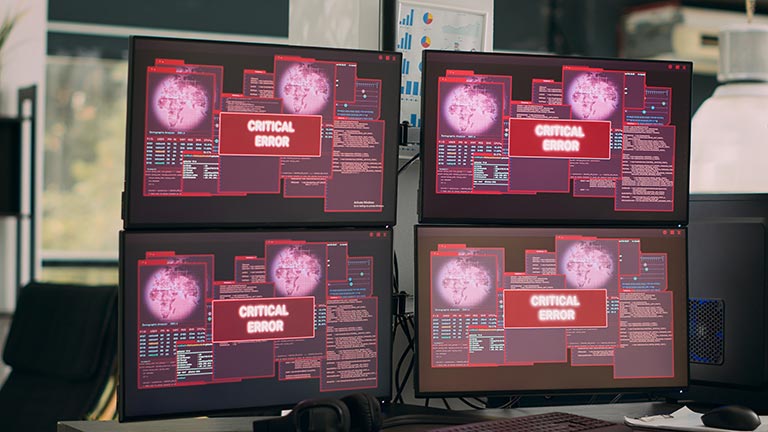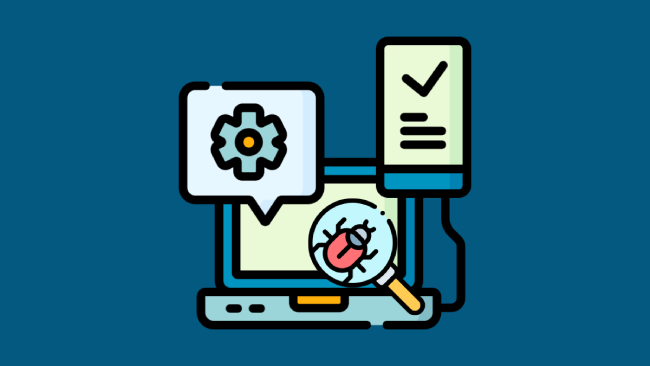Although end-to-end and regression testing are both critical software development processes, there are significant differences.
End-to-end testing evaluates the system for errors while focusing on the system’s functionality. In contrast, regression testing checks specific parts of the script for errors with focus and system stability.
What Is End-to-End Testing and Regression Testing

Regression testing is used to check if updates in software contain bugs or errors. This verification is done by retesting the software to determine if it will pass the same test. Sometimes, the test focuses on specific updates. Regression testing ensures that new changes or features to the code do not negatively affect the software. So, what is end-to-end testing, how does it affect the quality and reliability of a system and how does it differ from regression testing?
End-to-end testing is a comprehensive approach covering the entire aspect of software development. End-to-end testing is vital because, with it, the software meets all technical and business requirements.
Methods of End-to-End Testing
There are two methods to conduct end-to-end testing, and they are horizontal and vertical methods. Defining your methodology and operating in a proven test environment is crucial in horizontal testing.
Horizontal testing means assessing multiple systems simultaneously while checking the overall workflow of each program.
While horizontal testing checks the whole program, vertical testing divides the structure into several layers. Every layer is then tested individually before being analyzed.

Types of Regression Testing
There are several types of regression testing. As an engineer, your job is to select the test that best suits your project.
Corrective Regression Testing: This testing requires little effort. It is usually applied when there aren’t significant changes to the product description.
Retest-All Regression Testing: Unlike the above, this takes some time and can be exhausting. It requires retesting all the features in a product and reusing all the test cases. Whether a product has been modified or not, it is advisable to do this test to check the state of the product.
Selective Regression Testing: This test is conducted to determine the effect of a new code on software. It is not time-consuming and evaluates the affected code using a subset of test cases.
Progressive Regression Testing: Progressive testing is best used when changes have been made to the program specifications. It is also used when new test cases are made.
Complete Regression Testing: When there are significant changes in your test code, complete regression testing is used. Companies use this method when the code has been significantly changed.
Partial Regression Testing: This testing is done when separate modules with customary code mainland are merged.
Unit Regression Testing: This is an essential part of testing in software development. Unit regression testing ensures that resulting dependencies are shut off during the testing process.
Importance of End-to-End and Regression Testing
Most people are always bothered by the question, “What is end-to-end testing,” let alone give much thought to why they should consider end-to-end testing.
End-to-end testing is crucial, and its benefits cannot be overemphasized. End-to-end testing helps in detecting each issue regularly. It also checks the system flow and ensures that everything is working smoothly. Most importantly, it reduces software testing time and the cost of creating and maintaining software.
Regression testing also has its benefits. It ensures that new updates have not affected the code or introduced new bugs. It allows engineers to enhance programs without impacting end users’ experience. It also ensures that the latest updates are compatible and functional.
Tools for Regression Testing and End-to-End Testing
There are a lot of tools in the market for regression testing end-to-end testing, but not all of them are efficient; nevertheless, we have trusted tools like:
Functionize: This is one of the best automation testing tools. Functionize can be used for API call verification, file testing, database queries, and sms and email verification.
TestRigor: this tool uses basic English language commands and allows manual testers to build practical end-to-end test automation.
TestSigma: in TestSigma, the primary English language is used for online APIs and native mobile apps. Ai handles its automation process and helps make products ready for release.
Selenium: This tool allows you to develop and analyze tests for a different web application in several settings. It is an open-source tool and the choice tool of many companies.
Avo Assure: This scriptless test automation tool allows you to test entire business processes with just a few clicks of a button.
Main Difference Between Regression Testing and End-to-End Testing
There are several differences between end-to-end testing and regression testing, and they are as follows;
- End-to-end testing checks the whole system from top to bottom and ensures that the software is functional.
- In contrast, regression testing ensures that modifications do not ruin the software.
- End-to-end testing takes more time to run.
- Regression testing is done in less time.
- End-to-end testing focuses on workflow and is a comprehensive methodology.
- In contrast, regression testing targets new developments and verifies new codes.
Conclusion
Each of these testing methods, end-to-end and regression testing, has its strengths and disadvantages. The one you should use depends on what you’re looking for, your project’s needs, and whether you want comprehensive testing or want to test a specific feature.



Leave a comment
Have something to say about this article? Add your comment and start the discussion.